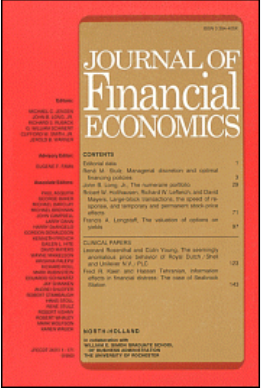央行驱动的错误定价
IF 10.4
1区 经济学
Q1 BUSINESS, FINANCE
引用次数: 0
摘要
本文探讨了量化宽松政策是否会对国债市场的运作产生负面影响。我们将重点放在欧洲主权债券及其期货合约之间的套利上,表明量化宽松造成的国债稀缺导致了相同资产价格之间的脱节。我们确定了三个渠道:债券市场流动性减少、回购市场融资成本增加以及持有成本上升。政策工具的变化使我们能够确定稀缺性是主要驱动因素,并排除其他替代因素,如资产负债表成本。我们的研究结果也适用于其他涉及国库券的套利关系。本文章由计算机程序翻译,如有差异,请以英文原文为准。
Central Bank–Driven Mispricing
We explore whether Quantitative Easing (QE) negatively affected the functioning of the treasury market. Focusing on the arbitrage between European sovereign bonds and their futures contracts, we show that the scarcity of treasuries created by QE led to a disconnect between the prices of identical assets. We identify three channels: reduced bond market liquidity, increased funding costs in the repo market, and a higher cost of carry. A change in a policy instrument allows us to identify scarcity as the main driver and rule out alternatives, such as balance sheet costs. Our results extend to other arbitrage relations involving treasuries.
求助全文
通过发布文献求助,成功后即可免费获取论文全文。
去求助
来源期刊

Journal of Financial Economics
Multiple-
CiteScore
15.80
自引率
4.50%
发文量
192
审稿时长
37 days
期刊介绍:
The Journal of Financial Economics provides a specialized forum for the publication of research in the area of financial economics and the theory of the firm, placing primary emphasis on the highest quality analytical, empirical, and clinical contributions in the following major areas: capital markets, financial institutions, corporate finance, corporate governance, and the economics of organizations.
 求助内容:
求助内容: 应助结果提醒方式:
应助结果提醒方式:


